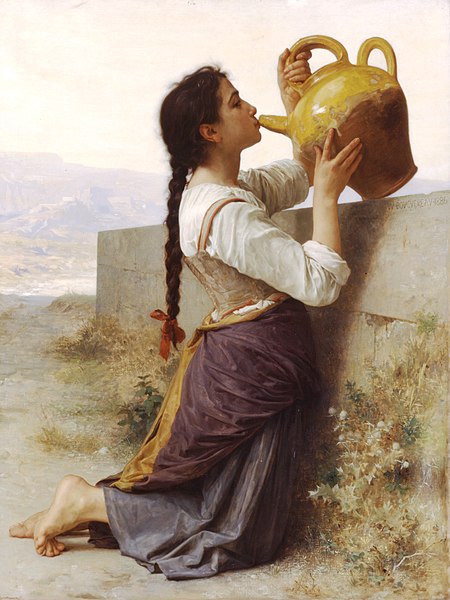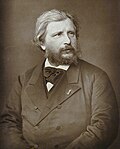File:William-Adolphe Bouguereau (1825-1905) - Thirst (1886).jpg

Kukura kwe chipandwa ichi: 450 × 600 pixels Zvimwe misimbiro: 180 × 240 pixels | 360 × 480 pixels | 576 × 768 pixels | 768 × 1,024 pixels | 1,818 × 2,424 pixels
Fayera repachivambo (1,818 × 2,424 pixels, file size: 1.03 MB, MIME type: image/jpeg)
Nhoroondo ye fayera
Dzvanya pa musi/nguva kuti uringe fayera sekuoneka kwaraita panguva iyoyo.
| Musi/Nguva | Mfananoudoko | Mitandu | Mushandisi | Komenda | |
|---|---|---|---|---|---|
| parizvino | 22:49, 6 Chivabvu 2005 |  | 1,818 × 2,424 (1.03 MB) | Thebrid | William-Adolphe Bouguereau (1825-1905) - Thirst (1886) {{PD}} {{PD-Art}} |
Kushandiswa kwe fayera
The following page uses this file:
Kushandiswa kwe fayera pasirose
Mawiki anotevera ayo anoshandisa fayera iri:
- Hushandiso pa ar.wikipedia.org
- Hushandiso pa azb.wikipedia.org
- Hushandiso pa az.wikipedia.org
- Hushandiso pa bcl.wikipedia.org
- Hushandiso pa be.wikipedia.org
- Hushandiso pa bg.wikipedia.org
- Hushandiso pa bn.wikipedia.org
- Hushandiso pa br.wikipedia.org
- Hushandiso pa ca.wikipedia.org
- Hushandiso pa ca.wiktionary.org
- Hushandiso pa cs.wikipedia.org
- Hushandiso pa da.wikipedia.org
- Hushandiso pa de.wikipedia.org
- Hushandiso pa de.wikiquote.org
- Hushandiso pa de.wiktionary.org
- Hushandiso pa diq.wikipedia.org
- Hushandiso pa el.wikipedia.org
- Hushandiso pa eml.wikipedia.org
- Hushandiso pa en.wikipedia.org
- Hushandiso pa en.wikiversity.org
- Hushandiso pa en.wiktionary.org
- Hushandiso pa eo.wikipedia.org
- Hushandiso pa eo.wikiquote.org
- Hushandiso pa es.wikipedia.org
- Hushandiso pa et.wikipedia.org
- Hushandiso pa et.wikiquote.org
- Hushandiso pa eu.wikipedia.org
- Hushandiso pa ext.wikipedia.org
- Hushandiso pa fa.wikipedia.org
- Hushandiso pa fa.wikiquote.org
Ringa kushandiswa kumwe kwe vupasirose kwe fayera rino.


